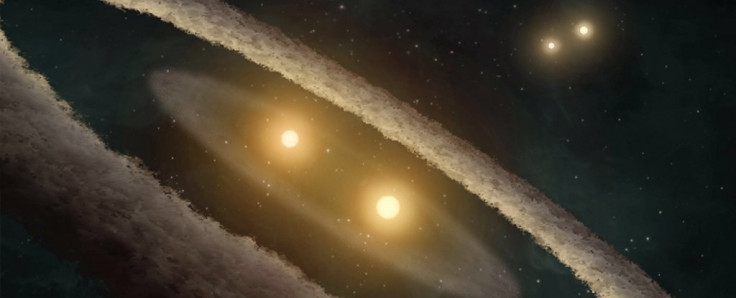The Sun may have had an evil twin named Nemesis that could have wiped out all dinosaurs
Astronomers suspect that the Sun's twin 'escaped' into space, 'never to be seen again.'

New research on how stars are formed indicates that our Sun may have been born with a twin. Researchers studying the formation of stars have proposed a new theory – that every star in the universe was born in litters. Astronomers think that the Sun was also born with a twin named Nemesis some 4.5 billion years ago.
Some astronomers suspect that Nemesis may have "kicked an asteroid into Earth's orbit," which in turn could have crashed onto Earth and effectively wiped out the dinosaur population. Although astronomers have hunted the depths of space for evidence of Nemesis' existence, the search has so far yielded no fruitful results.
However, new analysis based on a radio survey of a giant molecular cloud filled with recently formed stars in the constellation Perseus, conducted by researchers from UC Berkeley, suggests that all sun-like stars were born with a companion.
"We are saying, yes, there probably was a Nemesis, a long time ago," said co-author Steven Stahler, a UC Berkeley research astronomer. "We ran a series of statistical models to see if we could account for the relative populations of young single stars and binaries of all separations in the Perseus molecular cloud, and the only model that could reproduce the data was one in which all stars form initially as wide binaries. These systems then either shrink or break apart within a million years."
According to the astronomers, the Sun's twin "most likely escaped and mixed with all the other stars in our region of the Milky Way galaxy, never to be seen again."
Although Nemesis is not truly 'evil', astronomers believe the Sun's twin may have played a key role in the mass extinction of dinosaurs some 65 million years ago. But the researchers suggest that Nemesis' gravitational tug could have kicked the meteorite responsible for the giant beasts' extinction into a collision course with the earth.
Astronomers have long speculated about how binary and multiple star systems were formed and if stars in our galaxy were created close to each other. In recent years, researchers have developed computer simulations that support the theory of stars being born with companions. However, direct and conclusive evidence is yet to be found.
"The key here is that no one looked before in a systematic way at the relation of real young stars to the clouds that spawn them," Stahler said. "Our work is a step forward in understanding both how binaries form and also the role that binaries play in early stellar evolution. We now believe that most stars, which are quite similar to our own sun, form as binaries. I think we have the strongest evidence to date for such an assertion."
The research paper has been accepted for publication in an upcoming edition of the Monthly Notices of the Royal Astronomical Society and is currently available via arXiv.org.
© Copyright IBTimes 2025. All rights reserved.






















